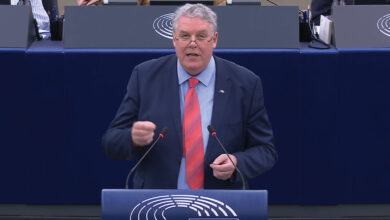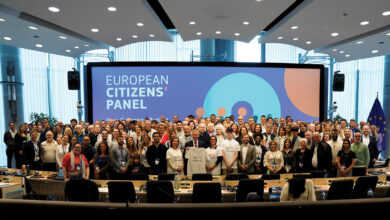Truce and treaty: 1921 centenaries
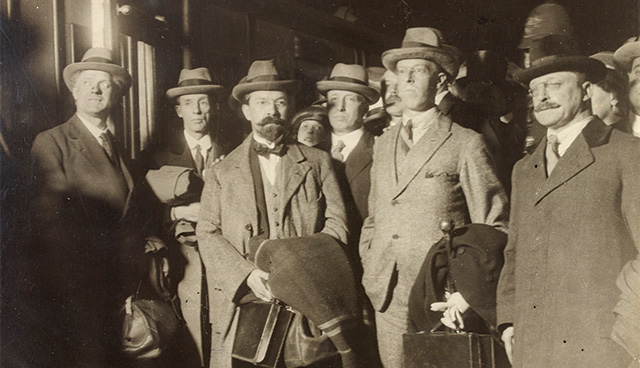
Conveniently, the ongoing Covid-19 pandemic enabled the State to avoid exploring the complex legacies of centenaries from the revolutionary era in 2020. How various watershed moments are ‘officially’ commemorated in 2021 remains to be seen.
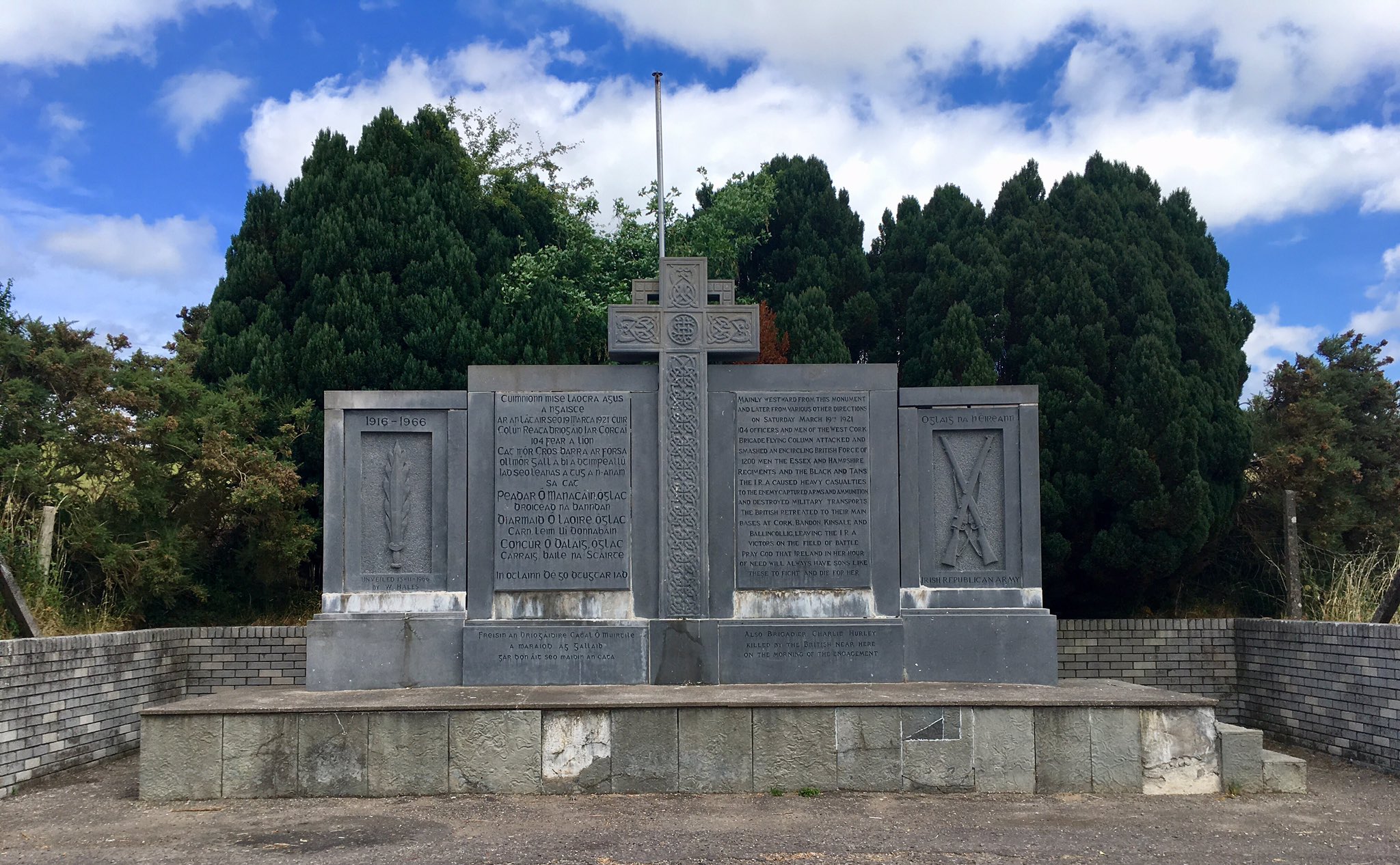
Crossbarry and Headford ambushes, 19 & 21 March 1921
The War of Independence escalated from late 1920 into 1921. On 19 March 1921, between Bandon and Cork city, having mobilised 1,400 soldiers and police, the British set out to encircle and destroy the Cork Number Three (West Cork) Brigade of the IRA. Tom Barry then decided that the encircled column, consisting of 104 officers and volunteers, would conduct a fighting retreat. An ambush was laid at the double crossroads at Crossbarry and British incursions repulsed.
Following its success, the column escaped to fight another day. Barry recorded three men killed and three wounded against 10 British dead and four wounded. In addition, Charlie Hurley, OC of the Brigade was recovering from wounds sustained at the Upton Ambush on 15 February 1921, was trapped in a nearby safe house and killed. Crossbarry was one of the most significant military engagements of the war and the closest to a conventional battle.
Three days later, at Headford Junction railway station near Killarney, Kerry Number Two Brigade ambushed a train carrying British troops travelling indirectly on the Kenmare to Tralee train. As the soldiers disembarked at Headford Junction, a column of 32 volunteers led by Dan Allman sprung the ambush. After half-an-hour, a second train arrived from Mallow carrying additional British troops, provoking the column to withdraw.
Two volunteers, including Allman and three civilians were killed. The British Army recorded nine of its personnel killed and 12 wounded, though these figures are disputed. Both ambushes were major success stories, though the propaganda value was arguably greater than the military significance, buoying the IRA and impressing upon public consciousness.
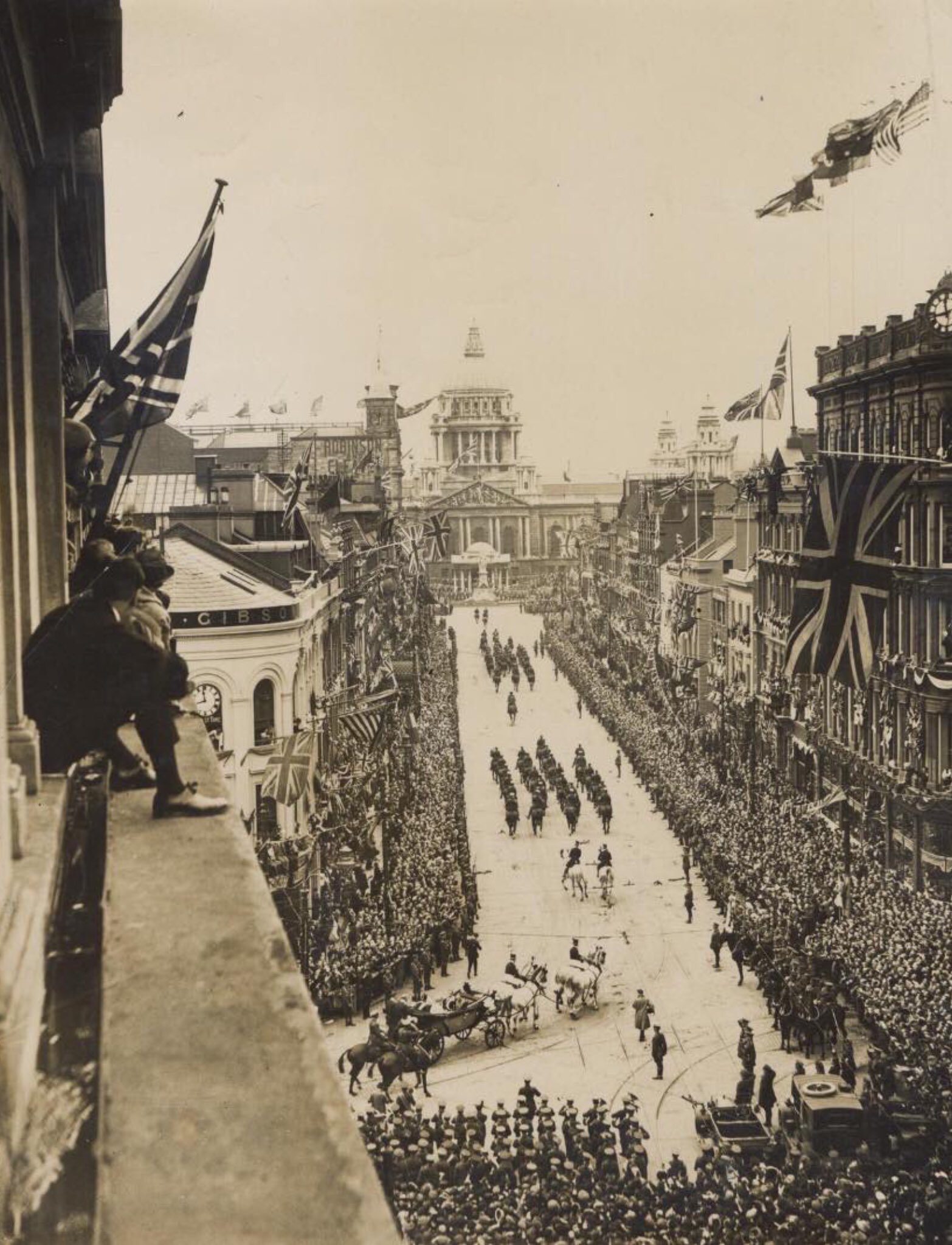
Crowds on Belfast’s Royal Avenue as King George V makes his way to City Hall to open the Northern Ireland Parliament, 22 June 1921.
The first Parliament of Northern Ireland and the Second Dáil, 24 May 1921
The Government of Ireland Act granted home rule to Ireland and established two parliaments: The 52-seat House of Commons of Northern Ireland and the 128-seat House of Commons of Southern Ireland. The first Dáil dissolved and used the results of the Southern Ireland general election as the basis for seat allocation in the Second Dáil. The Ulster Unionist Party, led by James Craig, won 40 of the 52 seats in the northern parliament, while Sinn Féin and the Nationalist Party won six seats each.
The first assembly of the Northern Ireland Parliament was held in Belfast City Hall on 7 June 1921 and was addressed by King George V. Neither Sinn Féin nor the Nationalist Party took their seats. In Southern Ireland, all 128 election candidates were returned unopposed. In June 1921, the Parliament of Southern Ireland was adjourned sine die after only the four non-Sinn Féin members (independent unionists representing the University of Dublin) sat. Led by Éamon de Valera, Sinn Féin won 130 seats across both elections (124 seats in the southern election and six in the northern). As Sinn Féin did not recognise either of the new parliaments, its six candidates elected in the north continued to attend the Dáil.
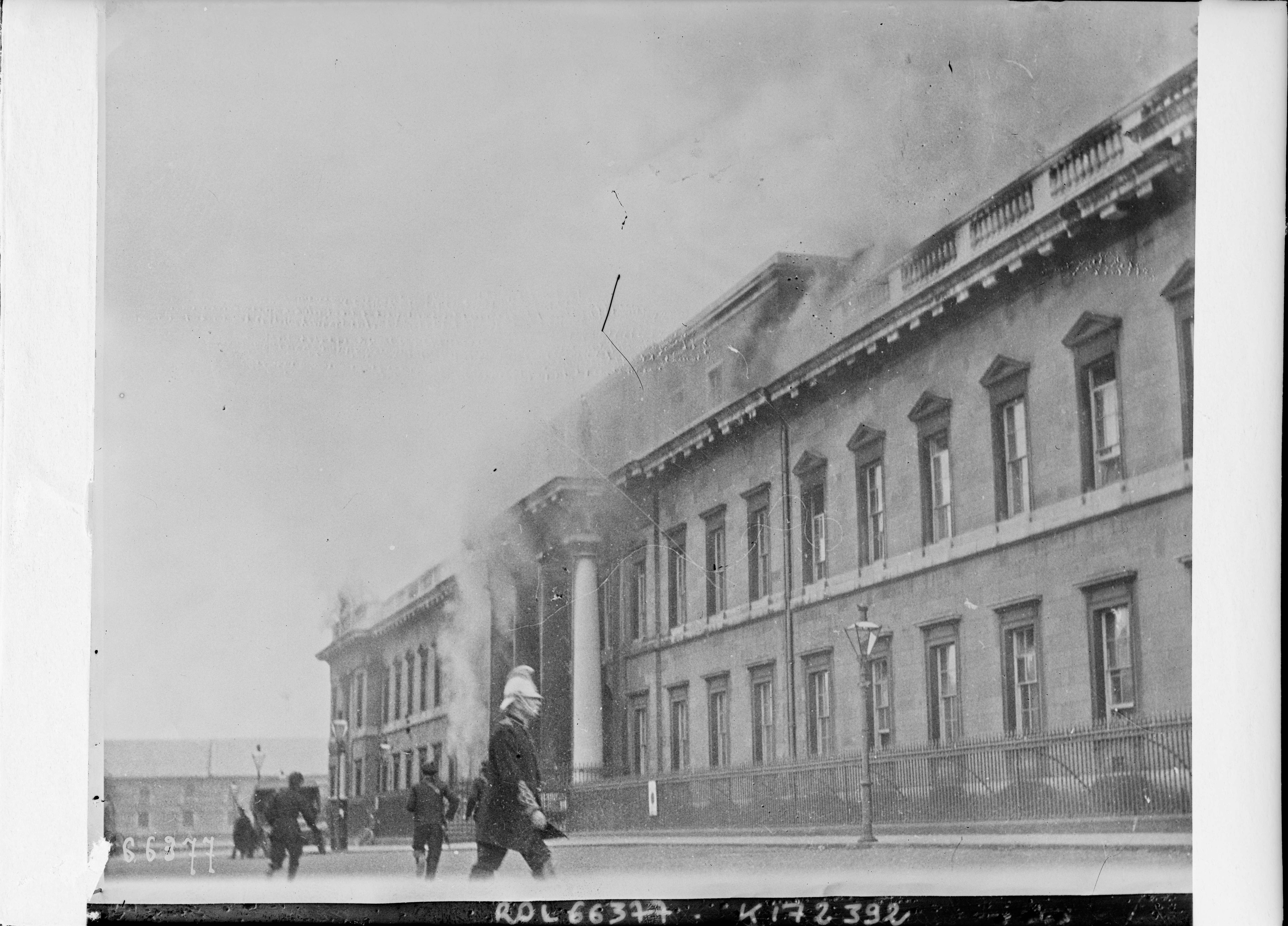
Burning of the Custom House, 25 May 1921
As replicated across the country, in spring 1921, the conflict in Dublin intensified, culminating in an attack on what Oscar Traynor described as “the administrative heart of the British Civil Service machine in this country”; the Custom House. As OC of the Dublin IRA, Traynor suggested that, if successful, the attack would “reduce the most important branch of British civil government in Ireland to virtual impotence”. Favouring large-scale engagements, the attack went ahead under the expressed insistence of Éamon de Valera who wished to “bring public opinion abroad to bear on the question of Ireland’s case”.
On 25 May 1921, over 120 men from the Dublin Brigade of the IRA took part in the operation, with many entering the building during working hours and clearing each of its four floors of 100 staff. Intended to take a total of 25 minutes, the objective was to burn the building. While the volunteers ultimately succeeded (with some assistance from the Dublin Fire Brigade), they failed to evacuate in time, and the Auxiliaries, already in the area, surrounded the building. A relatively short gun battle, in part due to the limited ammunition allocated, resulted in five volunteers killed and 80 captured, including members of Michael Collins’ Squad. Three civilians were also killed. Although it was a military disaster, the operation was regarded as propaganda victory.
Overall, it was the single largest operation in Dublin and in de Valera’s analysis, “if these 120 men were lost and the job accomplished, the sacrifice would be well justified”. Myriad administrative records had been destroyed in the five-day inferno, creating an administrative nightmare for the British, the desired international publicity was generated, and though weakened, the Dublin Brigade continued the war as the amalgamated Dublin Guard.
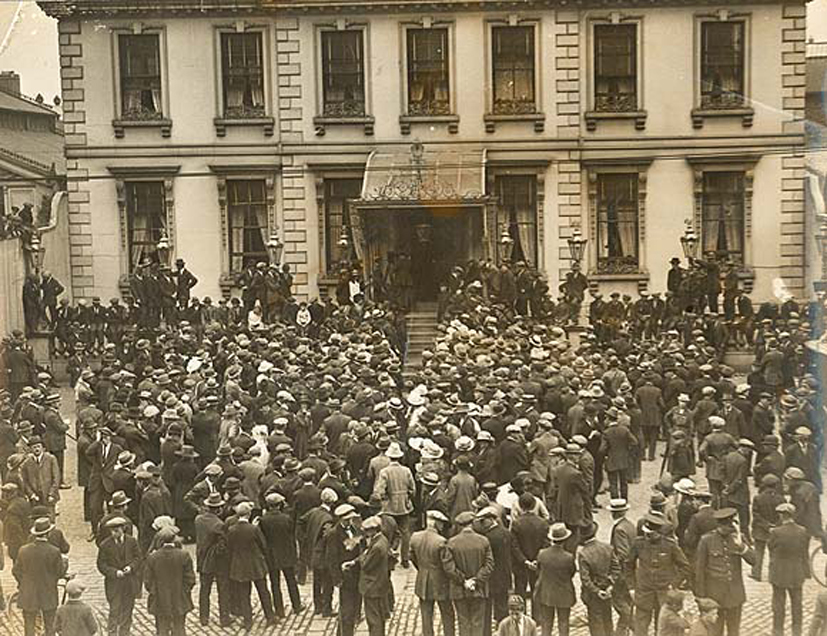
Truce, 11 July 1921
Between 4 and 8 July 1921, a series of negotiations took place between Éamon de Valera and Lord Midleton (William St John Fremantle Brodrick), culminating in the signing of a truce on 9 July by Robert Barton and Eamon Duggan from the Dáil cabinet and British General Officer Commanding-in-Chief Neville Macready. That same day, in a dispatch to Commandant General of Second Southern Division Ernie O’Malley, IRA Chief of Staff Richard Mulcahy wrote: “In view of the conversations now being entered into by our Government with the Government of Great Britain, and in pursuance of mutual conversations, active operations by our forces will be suspended as from noon, Monday, 11 July.”
Anglo-Irish Treaty, 6 December 1921
Following the truce, Éamon de Valera travelled to London and met British Prime Minister Lloyd George four times in one week (from 14 July 1921), though negotiations did not begin in earnest until October 1921. Formal negotiations were conducted by pairs from each negotiating team. On the Irish side, this was Arthur Griffith and Michael Collins, while on the British side, Austen Chamberlain was joined by an alternating negotiator. At two stages, once in November and again on 3 December, the Irish plenipotentiaries returned to Ireland to consult with the Dáil cabinet.
Final amendments were made to the Anglo-Irish Treaty on 5 December 1921, with Griffith and Collins convincing the rest of the Irish delegation to sign it in the early hours of 6 December. Its main terms included: the withdrawal of British forces from most of Ireland; Ireland would become a self-governing dominion of the British Empire, the English King would be the Head of State of the Irish Free State; members of the Free State parliament would be required to take an Oath of Allegiance which included the words “be faithful to His Majesty King George V, His heirs and successors by law, in virtue of the common citizenship”; Northern Ireland would have the option of seceding from the Irish Free State within one month of the Treaty coming into effect and if it did so, a Boundary Commission would be established; and Britain would continue to control Treaty Ports.
On 8 December, the Dáil cabinet voted four votes to three (including de Valera) to recommend the Treaty to the Dáil. Nine days of public debate began in the Dáil on 14 December 1921. Dáil Éireann voted to approve the Treaty on 7 January 1922, with 64 in favour, 57 against and four (including the Ceann Comhairle) not voting.

